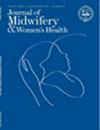Perinatal Health Care Preferences in a Rural Mennonite Community: A Mixed-Methods Study
Abstract
Introduction
A rapidly growing rural community of Old Order Mennonites in upstate New York abruptly lost midwifery services in 2018, causing a crisis in perinatal care access. A mixed-methods study was undertaken to explore health status, perinatal needs, and preferences in this culturally homogenous group.
Methods
An anonymous survey mailed to 650 Mennonite families assessed demographic characteristics, general health, perinatal optimality, perinatal care characteristics, stress and anxiety related to rural childbearing, and preferences for a perinatal health care system. Voluntary follow-up telephone interviews explored recent perinatal experiences and desires for future care.
Results
Surveys were returned by 218 Mennonite women, a 33.5% response rate. Home birth was preferred by 94.6% of participants. The mean (SD) Perinatal Background Index score was 86.7% (11.7), indicating a high level of optimality. Elevated levels of stress and anxiety, as measured by the Rural Pregnancy Experience Scale, were reported by 12 participants (6.6%). Qualitative descriptive analysis of 21 interviews revealed a strong desire to preserve home birth, receive care that was respectful of Mennonite cultural norms, and maintain a personal choice of birth attendants.
Discussion
According to participants, an ideal perinatal care system would ensure locally available, skilled midwives willing to maintain the community's traditional childbearing practices. Despite rural remoteness, distance from inpatient perinatal services was not associated with increased stress and anxiety. Access to care could be improved by state-level initiatives to expand the licensure of midwives and to remove barriers to birth center development.

 求助内容:
求助内容: 应助结果提醒方式:
应助结果提醒方式:


